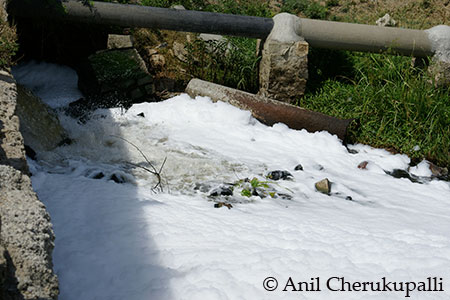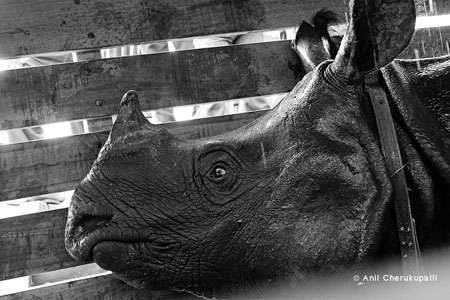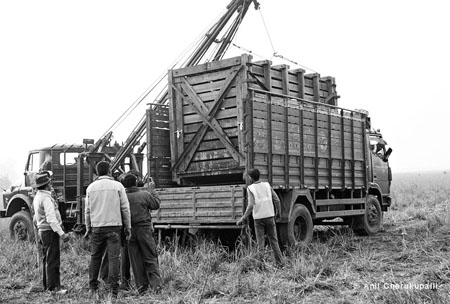The mantra that drives India today is development through industrialisation. Having missed the first wave of industrialisation India latched on to the emerging industries of the new millennium: Information Technology and Biotechnology. The precursor to biotechnology was the pharmaceutical industry which took root in Hyderabad from the late 1970s onwards. The succeeding decades saw Hyderabad emerge as one of the world’s largest centres for bulk drug production. The drugs were exported to major markets around the world including Europe and the USA and in lesser developed markets in Africa.
The rise of the Indian generics industry was made possible by a host of institutional and non-institutional factors: availability of a large pool of scientists; the Patents Act of 1970 that made a distinction between product and process patents which removed the legal constraints for manufacturing generics. In particular, the establishment of Indian Drugs and Pharmaceuticals Limited (IDPL) in 1961 by the government in Hyderabad led to the concentration of the generics drug industry in the southern Indian city.
The pharmaceutical manufacturing units are concentrated in the Patancheru industrial area, which lies 25 kilometres to the northwest of the city. Although a separate municipality before 2007 Patancheru became part of the newly constituted Greater Hyderabad Municipal Corporation that year. The newly constituted GHMC made it possible for the erstwhile suburban municipalities to access more funds for civic amenities and provided an integrated development plan for the Greater Hyderabad conurbation.
Though Hyderabad has become an important node in the global pharma industry, the environmental, human, economic and social costs have been overlooked. Although the benefits of providing cheap generic drugs are not in question the environmental cost is being borne by communities located in the vicinity of the drug manufacturing units in Patancheru. Since the early 1980s, when the pharma industry took off, these communities have had their water and soil polluted by the untreated industrial effluents. This has affected their livelihoods in the form of decreased agricultural yields. On the health front, although the evidence is anecdotal, abortion rates have increased; stunted growth has been reported in children, and increased incidence of skin diseases. The communities lack of the means to make their voice heard and along with willful disregard of existing environment laws and their monitoring by the regulatory authorities makes Patancheru a typical case of environmental neglect in a developing country.
A Swedish research team led by Joakim Larsson from the University of Gothenburg conducted a study on the levels of pharmaceutical drugs in the water discharged from a common effluent treatment plant in the Patancheru area of Hyderabad. The shocking results of the study, which was published in January and April 2009 in peer reviewed scientific journals, revealed the presence of very high levels of antibiotics such as Ciprofloxacin (up to 6.5 mg/L) and the anti-histamine drug Cetirizine (up to 1.2 mg/L). In one place, the levels were found to exceed human therapeutic blood plasma concentrations!
Moreover, it was not just Ciprofloxacin or Cetirizine that were found in the treated effluent. According to an Associated Press report, the supposedly cleaned water contained 21 different active pharmaceutical ingredients, used in generics for treatment of hypertension, heart disease, chronic liver ailments, depression, gonorrhea, ulcers and other ailments. Half of the drugs measured at the highest levels of pharmaceuticals ever detected in the environment!
The study states that pharmaceutical production ‘severely contaminates surface, ground and drinking water in the investigated region and that the previously demonstrated pharmaceutical releases from PETL is still occurring‘. The Patancheru Enviro Tech Limited (PETL) is the common effluent treatment plant that was set up in 1995 to treat the discharge from around 90 bulk drug manufacturing units located in the Patancheru area, including Dr Reddy’s Labs, Aurobindo Pharma and Newland Labs.
The treated effluent from PETL is discharged into the Iskkavagu stream, which then flows into the Nakkavagu river. The Nakkavagu river then runs into the Manjeera river which ultimately joins the Godavari river. Manjeera river is the major drinking water source for the city of Hyderabad while Godavari river is one of the major rivers in southern India whose waters are used to irrigate millions of acres of agricultural land in Andhra Pradesh. Although there are three to four other streams that flow into the Nakkavagu river the Swedish team’s findings showed the Iskavagu and Nakkavagu to be the most contaminated of the water sources in Patancheru.
There are 20 villages in and around the industrial area with an estimated population of a lakh people. Plus, there are an additional 75,000 people in the Patancheru suburb. Pocharam and Ganapathigudem, two villages that are located closest to PETL, bear the brunt of this potential ecological disaster. The villages lie downstream of the Iskavagu stream. This has resulted in severe contamination of all ground and surface water sources in and around the villages.
Pocharam is located roughly a kilometre from PETL. By accident or design, the administrative boundary of Pocharam gram panchayat ends a few feet before PETL. The treatment plant effectively falls in the jurisdiction of the GHMC. Although topographically the village and the treatment plant are contiguous they are governed by different laws legally. The villagers have to travel to Hyderabad for any matter concerning the plant. Meanwhile, the plant sits on the other side of the Iskavagu stream and the villagers can do nothing. “If the plant was within our gram panchayat boundary we would have had the authority to close them down, “says Praveen Singh, a resident of Pocharam.

Effluent from PETL plant flowing into Iskavagu stream in Patancheru, Hyderabad
As seen from the photos taken of the Iskavagu stream, which flows beside the PETL plant and where the treated effluents are released, the stream surface is covered by a layer of thick white foam. Basketball sized flecks of foam are blown around by wind over a greater area. The stream water is dark brown in colour and smells bad. Praveen Singh also added that when the foam lands on skin it causes severe itching and rashes while contact with eyes lead to eye burn and redness.

Flecks of foam being blown from the surface of Iskavagu stream, Patancheru, Hyderabad
According to the villagers, apart from mosquitoes no other life forms exist in the stream or in the river. According to other residents of Pocharam village, the quantity of white foam and the bad smell increase greatly in the night. The villagers allege that this is because the plant and the tanker trucks (that normally carry the effluent to the plant during the day) resort to open dumping of the pharmaceutical waste into the stream in the night without treatment.
It is hard to independently verify the villager‘s claims as no government agency has thought it fit to conduct a study to assess the potential social and health problems caused by the presence of such high levels of drugs in their local environment. Satti Reddy, 60 yrs old, who is a resident of Ganpatigudem village, alleges that not a single government official came to visit their village even after the Swedish studies generated much international and national media interest and reached even the attention of the Indian prime minister. Sadly, official apathy seems to be the norm for the Patancheru area when it comes to protecting the environment.
Dr. A. Kishan Rao, a medical practitioner and member of Citizen’s Against Pollution (CAP) recalls the genesis of a remarkable people’s movement in the late 1980s against the rampant dumping of chemical industrial waste in the Patancheru area. The Patancheru industrial area was set up in the mid-1970s to stimulate industrial growth in Hyderabad. But in the rush to industrialise many of the environmental regulations governing the proper disposal of industrial waste were either overlooked or unenforced. “This resulted in,“ says Dr. Rao, “illegal and often open dumping of industrial waste in open areas not just from local trucks but by trucks that came all the way from the neighbouring state of Karnataka!“
In 1986, CAP launched an awareness campaign against pollution. Along with affected communities they formed the Patancheru Anti Pollution Committee (PAPC). The activists staged dharnas, relay hunger strikes and demanded an end to the pollution. “We marched to the office of the Andhra Pradesh Pollution Control Board (PCB) demanding an end to the pollution,“ says Prof. K. Purushottam Reddy, President of CAP, recalling those times. In 1987, nearly 2000 people marched 40 km from Patancheru to the AP State Assembly and presented a list of demands to then Chief Minister N. T. Rama Rao. Some of the demands included the construction of an effluent treatment plant for each industrial unit, adequate compensation for degraded agricultural land and supply of safe drinking water to effected villages.
PAPC’s continued pressure resulted in the Medak district administration serving notice to 22 industries in Patancheru. The court set a deadline of September 3, 1987 to build individual ETPs. This order wasn’t complied with. The PAPC then started its second, more innovative phase of public protest. They blocked the National Highway 9 connecting Hyderabad and Mumbai with 500 bullocks! In October, the farmers filed a petition in the AP High Court against 20 of the 22 polluting industries. The subsequent High Court ruling went in favour of the industries.
The farmers then approached the Supreme Court (SC) through prominent environmental lawyer M.C. Mehta in 1989. The half a decade long legal battle resulted in the SC asking the Nagpur-based National Environmental Engineering Research Institute (NEERI) to conduct a thorough study on industrial pollution in the Nakkavagu basin. Based on the NEERI report the SC ordered the industries to cease the release of effluents into local water bodies. The SC ordered that compensation for the affected families must be paid by the polluting industries. The apex court also directed the local authorities to provide safe drinking water to the affected villages.
But the compensation paid has been uneven. According to activists, 2.13 crores were paid to families spread across 10 villages. Although less than adequate, it was a start. But even this has petered out in recent years according to the villagers. In addition, a drinking water pipeline was laid by the Hyderabad Metropolitan Water Supply & Sewerage Board.
Meanwhile, a district judge who conducted an investigation pointed out that the PETL was itself a major contributor to pollution. In 2000, the SC expressed ‘anguish’ that no action plan had been formulated to tackle the problem even after a decade. That same year a plan to build a 22 km pipeline from Patancheru to Amberpet, in the heart of Hyderabad, was devised by which effluents would be taken from Patancheru and dumped into the Musi river that flows through Hyderabad. The pipeline is now almost ready, though it is yet to start functioning.
“We are not happy with it because unless you treat the effluents at the beginning and at the end you are essentially dumping the pollution in the heart of the city instead of at the peripheries, “says K. S. Murthy, an advocate who represents the farmers by the banks of the Musi river who moved the AP High Court against the plan. According to him, the Patancheru case is about reducing pollution and securing compensation, both of which have been less than satisfactory.
The AP Pollution Control Board meanwhile says that it has the situation under control. A PCB official, who didn’t want to be named, said that the pollution is showing a ‘decreasing trend‘. “After the pipeline is completed the effluents will not be dumped into local water sources in Patancheru, “he added.
The villagers living in Patancheru seem resigned to their fate. When they talk about the pollution it is in a matter of fact way. Ganapathigudem is a village of 600 odd people located 2 km downstream of the PETL. Many villagers own tracts of agricultural land in the area that they say produce below average yields. Srisailam Goud, a resident of Pocharam village said, “We used to get 40 bags of paddy per acre which has now reduced to 10 bags“. A few of the better educated ones get some of the menial jobs in the factories. Some of the economically better off families have sold their land and houses and moved to the city. The infrastructure needs of Hyderabad have brought some relief. A massive ring road, meant to ease the traffic woes of the city, is being built and the north-western section skirts Pocharam village. Land was acquired from some villagers at government rates. Though below market rates, villagers lucky enough to receive it moved out rather than stay here.
According to Dr Kishan Rao, a more serious problem, which can lead to grave public health problems in the future, is the development of antibiotic resistance due to the very high levels of antibiotics in the discharge from the PETL. The Swedish reasearch team also expressed the same concerns. According to them, “The most obvious risk associated with the findings is that the high levels of broad-spectrum antibiotics could induce the development of antibiotic-resistant microorganisms.“ Antibiotic resistance develops because the bacteria present in the environment are put under selection pressure by the high levels of antibiotics found in the water sources. What this means is that only those microorganisms that have developed resistance against the antibiotics survive. These surviving microorganisms will then increase in numbers and spread in the environment. These resistance characters, which are nothing but genes, could be transferred to human pathogens through horizontal gene transfer. This is when genes from one microorganism are transferred to another microorganism. This could lead to the development of antibiotic resistant pathogens against which the existing antibiotics may be ineffective. Previous studies done in and around Pencillin manufacturing sites in China have shown this to be happening leading to the development of multi drug resistant bacterial strains.
“Not a single Indian scientist or doctor has conducted follow up studies to the Swedish study“, laments Dr. Kishan Rao. He expresses concern over the possible contamination of the food chain through food grains and vegetables grown using the contaminated water or through cow/buffalo milk from cattle that drink the contaminated water. These correspondents had indeed seen cattle from the Pocharam and Ganapatigudem villages drinking from the foam covered Iskavagu stream just downstream of the PETL plant. The villagers expressed their inability to stop the cattle from drinking the polluted water.
In the case of Patancheru, due to the presence of extremely high levels of antibiotics and other drugs in the local water sources no one knows what health problems they will give rise to in future through the development of previously unknown drug resistant microorganisms. As the Swedish research team’s paper suggests, “The increasing occurrence of multi-resistant pathogens is a serious global threat to human health and is promoted by the heavy use of antibiotics in human and veterinary medicine. “ The problem is even graver at the PETL plant as it uses approximately 20% raw human faeces to maintain biological activity. As human faeces contains pathogens and other microorganisms it is possible that such close contact between the pathogens, resistant bacteria already existing in the effluent and the high concentration of antibiotics might lead to development of new multi-drug resistant pathogens. This could have grave effect on current treatment strategies that depend on antibiotics like Ciprofloxacin.
Compounding the existing problem of high levels of pollution is the lack of regulatory oversight. The APPCB, according to activists, is not capable of monitoring antibiotic pollution because it lacks trained personnel and equipment.
Activists say that the problem can be tackled by having individual effluent treatment plants for each industrial unit with effective and regular upstream and downstream monitoring of effluents. Dr. Kishan Rao estimates that setting up of individual ETPs will cost between 1-3 percent of an average pharma company’s turnover. But as long as companies worry more about toplines and bottomlines that will remain unfulfilled.
Recommended Citation: Dhara, Tushar., Cherukupalli, Anil. The Cost of Cheap Medicines: Antibiotic Pollution in Patancheru. http://anilcherukupalli.com/blog/2010/03/07/the-cost-of-cheap-medicines-antibiotic-pollution-in-patancheru/
[-] Show Less

















